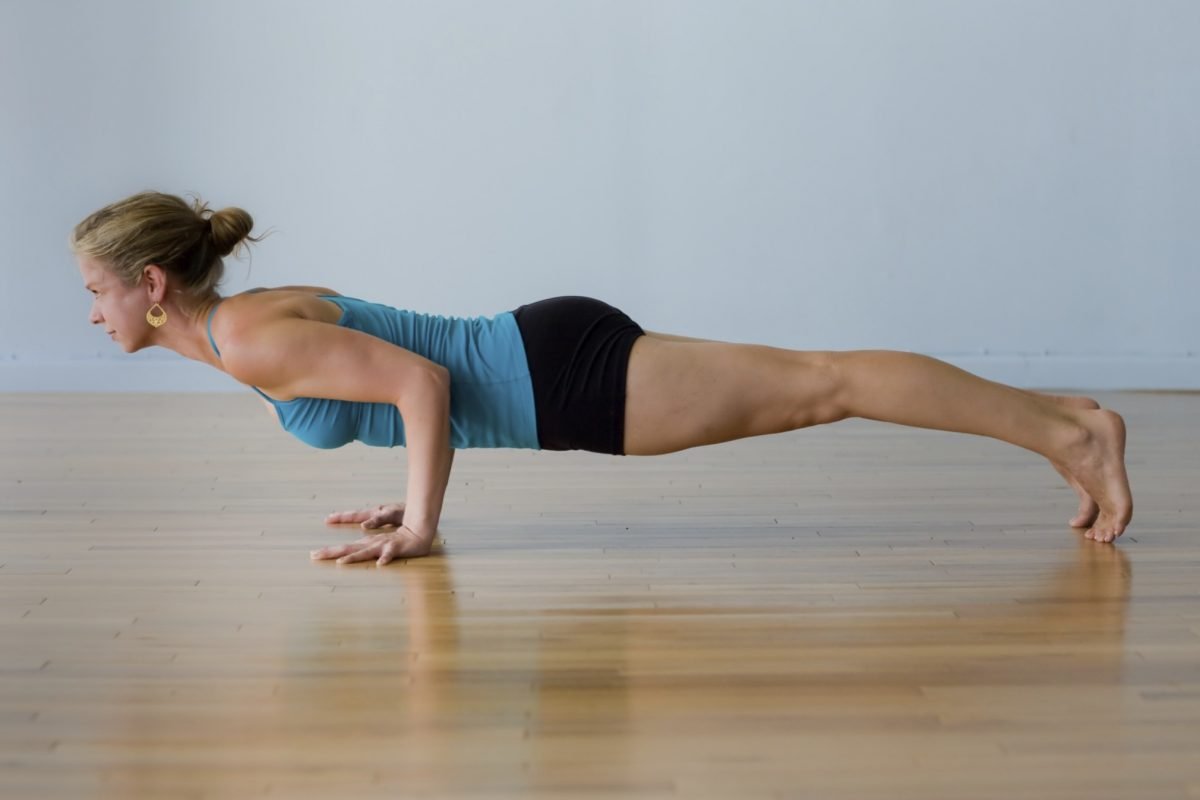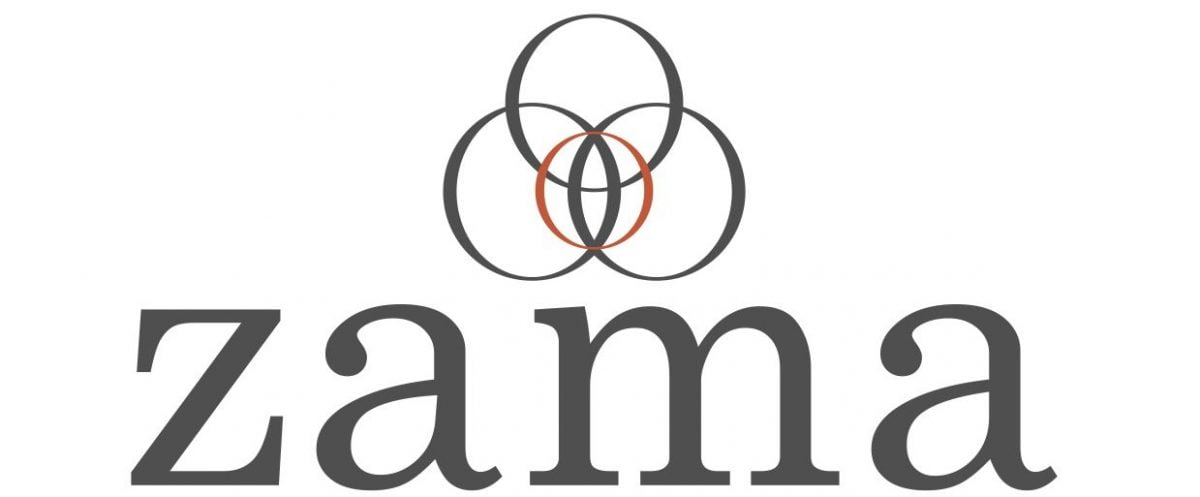 Chaturanga Dandasana (or just “chaturanga” as it is often known in classes) is our low plank position. Chaturanga means four limbs, danda means staff and asana means pose in Sanskrit – so this is the four-limbed staff pose. In a vinyasa class, as well as most hatha-based yoga classes, we will do this pose several times during sun salutations (Surya Namaskar). When done correctly, this pose helps you engage your foundational strength through the core of your body, preparing the body for further practices. Chaturanga Dandasana strengthens the arms, shoulders, and legs, and prepares the body for arm balances and inversions. As always, be mindful of the body and your own strength and come down to your knees if the body requires it.
Chaturanga Dandasana (or just “chaturanga” as it is often known in classes) is our low plank position. Chaturanga means four limbs, danda means staff and asana means pose in Sanskrit – so this is the four-limbed staff pose. In a vinyasa class, as well as most hatha-based yoga classes, we will do this pose several times during sun salutations (Surya Namaskar). When done correctly, this pose helps you engage your foundational strength through the core of your body, preparing the body for further practices. Chaturanga Dandasana strengthens the arms, shoulders, and legs, and prepares the body for arm balances and inversions. As always, be mindful of the body and your own strength and come down to your knees if the body requires it.
However, for a pose that is practiced dozens of times a class, several yogis and yoginis unknowingly have incorrect alignment that is actually working the body harder than is needed.
For a correct Chaturanga Dandasana practice:
1. Begin in plank pose, with hands under shoulders and feet flexed firmly, leg muscles engaged.
2. Press into the soles of the feet and align shoulders ahead of wrists slightly as you engage the quadriceps and reach the sternum forward. Feel the straight, strong line of energy, the danda (staff), from the crown of your head to the feet.
3. Inhale as you draw the heads of the shoulders and tops of the thighs away from the floor, engaging the uddiyana bandha (drawing the abdomen up and in).
4. When the next exhalation comes, lower the body with control, bending the elbows and keeping them drawn in against your sides and keeping elbows over wrists. Maintain the straight plank position of the body as you lower, without sagging in the centre or tipping chest to ground and buttocks to the sky.
5. Keep your gaze forward or to the floor, just in front of your mat, and lower until your shoulders are at the same height as your elbows. You body should lower only as far as your elbows can attain a 90 degree angle, taking care not to sink the chest further.
6. To exit the pose, either exhale and release the belly down the mat, un-tucking the toes, or push back up to high plank pose, or alternatively draw the chest forward and come to the tops of the feet for upward-facing dog.
Some tips that may help your chaturanga dandasana:
- If your body allows it, tuck the elbows as firmly as you can against your sides
- Your drishti point (focal point) is important in any yoga pose, including the low plank. Your body will move in the direction of the eyes, so to keep your heart and chest moving forward, track your eyes forward or to a point just in front of your mat.
- Reach through both the heels and the crown of the head to keep the strength through the body.
- Use props! Loop a strap around the point above your elbows, pinning your elbows to your sides as you practice chaturanga dandasana to teach the body the feeling of only lowering to a 90 degree angle in the elbows. Use a block under each shoulder to ensure the chests stays high and level, or one block in the centre of the chest to keep that lift (play around with the height of the block to find the side that suits your body).
Enjoy the yogi push-up!
